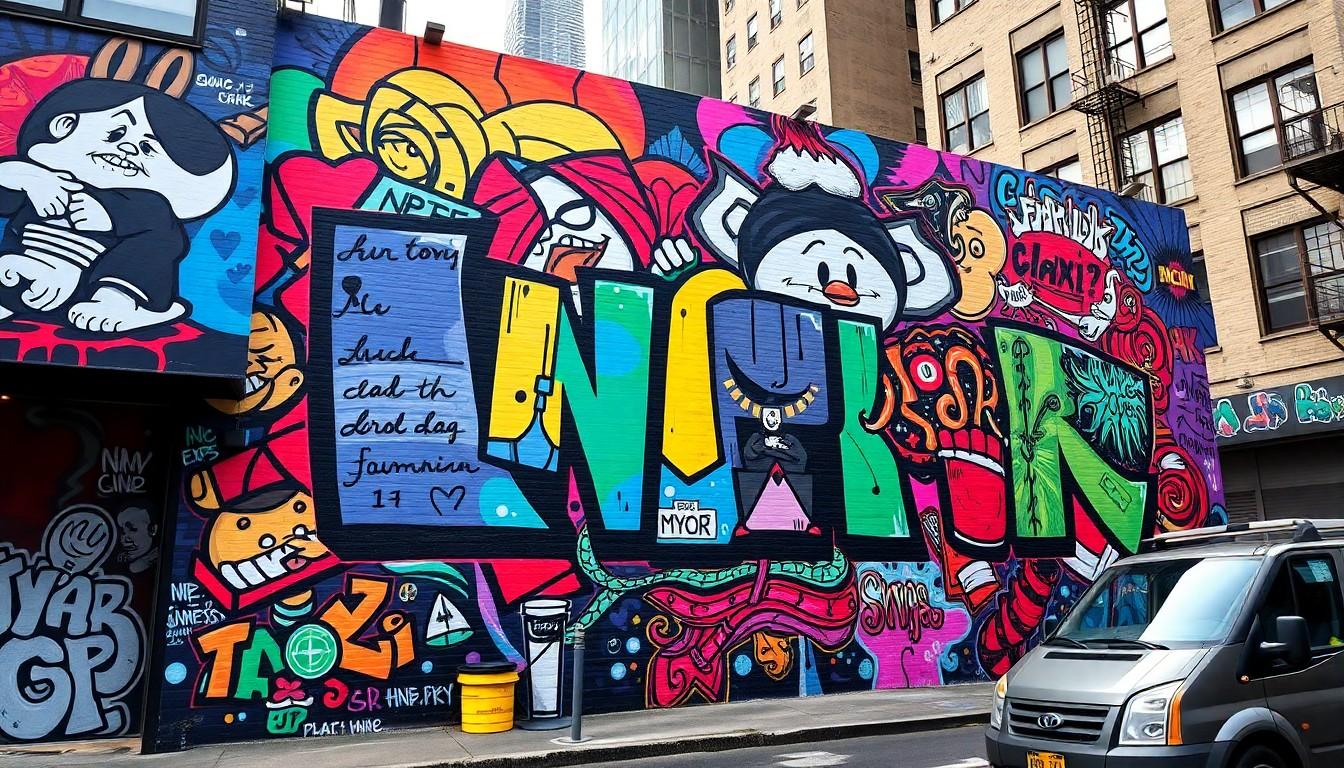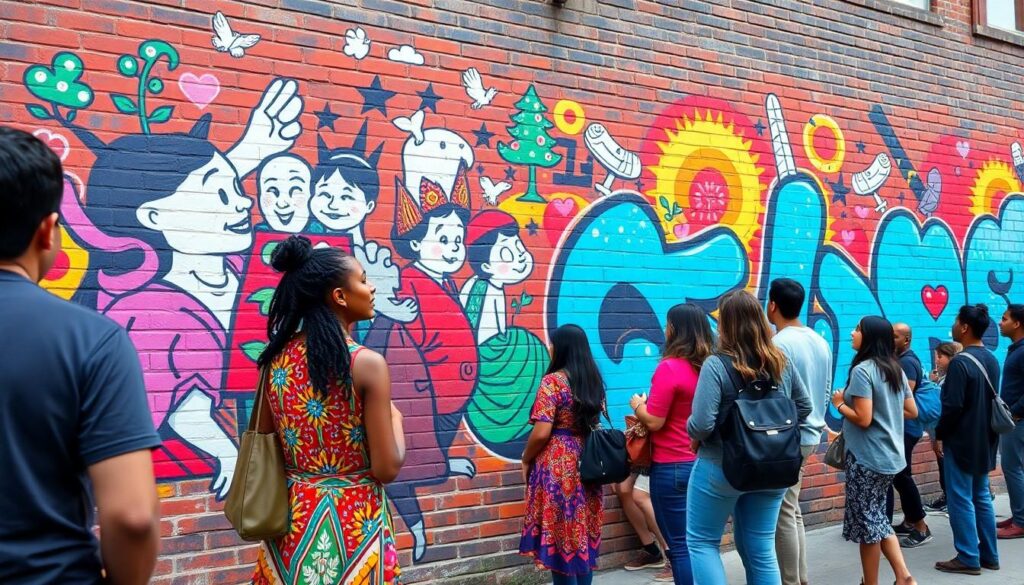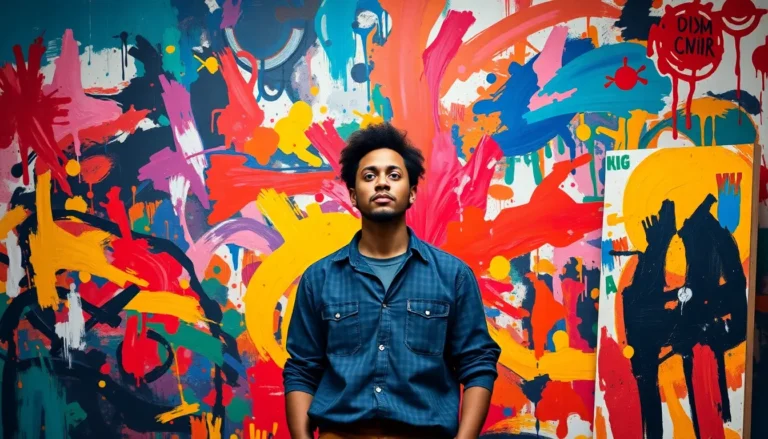New York City isn’t just a concrete jungle; it’s a vibrant canvas splashed with creativity at every corner. Street art here tells stories that galleries can only dream of capturing. From cheeky murals to thought-provoking graffiti, each piece invites onlookers to pause, ponder, and maybe even chuckle.
As you stroll through neighborhoods like Bushwick and the Lower East Side, you’ll find a riot of colors and characters that reflect the city’s eclectic spirit. It’s not just art; it’s an experience that challenges perceptions and sparks conversations. So grab your camera and your sense of humor, because in the world of New York street art, every wall has a tale, and every artist has a punchline waiting to be discovered.
Table of Contents
ToggleOverview of New York Street Art
New York City’s street art embodies a captivating blend of creativity and culture. Artists utilize public spaces to express messages, emotions, and community identities. Murals in Bushwick feature large, vivid designs that often challenge societal norms. Graffiti on the Lower East Side tells stories of resistance and resilience, contributing to the dialogue around gentrification.
Visitors encounter various styles, from whimsical characters to powerful political statements. Each district showcases unique artistic voices influenced by its history and demographics. Iconic locations like the Bowery Wall serve as canvases for renowned artists and emerging talents alike, promoting an ever-evolving art narrative.
Street art thrives on collaboration, creating a sense of community among artists and residents. Galleries often host events that integrate street art into traditional exhibitions, blurring the lines between formal and informal art spaces. Public art festivals, like the Bushwick Collective, bring together local and international artists, transforming the neighborhood into a vibrant outdoor gallery.
Several social issues find expression in the artwork, titled with urgency and relevance. Themes of social justice, environmentalism, and mental health frequently surface, illustrating the artists’ engagement with current events. By walking through these neighborhoods, individuals discover how street art reflects not only the artists’ perspectives but also collective experiences.
Street art has become a significant tourist attraction, drawing art enthusiasts and casual observers alike. Maps highlighting popular murals guide visitors through the city’s artistic landscape, ensuring that no significant artwork goes unseen. Each piece invites viewers to explore deeper connections to the community and the stories embedded within the art.
Historical Background

New York’s street art scene boasts a rich history, evolving significantly over the decades. Understanding its roots helps to appreciate the multitude of expressions found today.
Early Street Art Movements
In the late 1960s, street art began as a form of rebellion. Artists like those in the graffiti movement shared their messages on public walls. A key milestone occurred in the 1970s with the rise of subway graffiti, where iconic pieces transformed trains into mobile canvases. This era drew inspiration from hip-hop culture, increasing visibility and sparking interest in urban art forms. Famous artists, such as Keith Haring and Jean-Michel Basquiat, emerged, merging street art with contemporary art influences. Their works often addressed social issues, making art accessible to the masses. As a result, these early movements laid the groundwork for the diverse expressions found in today’s street art.
Evolution Through the Decades
The 1980s and 1990s saw significant shifts in New York’s street art landscape. During this period, murals appeared, promoting community pride and engagement. Artists began forming collectives, using their platforms to tackle pressing social issues such as poverty and racism. The emergence of smaller galleries in neighborhoods like SoHo also legitimized this form of expression. Street art transitioned from illegal tagging to a recognized art form, with city initiatives supporting legal murals. By the 2000s, street art gained international attention through festivals and exhibitions. This evolution not only showcased artistic talent but also highlighted the power of art in social commentary.
Prominent Street Artists
New York City’s street art scene thrives with diverse, influential artists, each making unique contributions to the urban landscape. Their works resonate with the community, forging connections among viewers.
Banksy and His Impact
Banksy stands as an emblematic figure in street art, known for combining social commentary with dark humor. His pieces, like “Girl With a Balloon,” provoke thought and engage discussions on political issues, drawing crowds to New York. The 2013 “Better Out Than In” residency showcased his work throughout the city, amplifying his influence and inspiring other artists. While his identity remains mysterious, Banksy’s art continues to challenge norms and ignite conversations, solidifying his legacy in the industry.
Local Talents to Watch
Emerging local artists add fresh perspectives to New York’s street art landscape. Artists such as KATSU, known for drone graffiti, bring innovative techniques to the scene. Meanwhile, Lady Pink blends vibrant colors and intricate designs, capturing viewer attention. In addition, Fumero’s lighthearted characters provide a whimsical touch to the city’s urban canvas. Each artist highlights cultural themes and community narratives, enriching New York’s artistic tapestry. Their creativity invites exploration and fosters connections within neighborhoods, making their work essential to the evolving street art scene.
Iconic Street Art Locations
New York City boasts numerous iconic street art locations that attract both locals and tourists. Each area provides a unique glimpse into the vibrant urban art culture.
Williamsburg and Bushwick
Williamsburg and Bushwick feature some of the most dynamic street art in NYC. Murals vibrate with color and creativity, transforming ordinary walls into spectacular canvases. Artists like KATSU and Lady Pink leave their mark here, each adding a distinctive style to the neighborhood. The streets showcase large-scale works that challenge societal norms and engage with community identities. Art fairs and events frequent the area, fostering collaboration among artists and locals. This creative energy keeps the neighborhoods buzzing with life and inspiration, making them essential stops for street art enthusiasts.
The Bowery and Lower East Side
The Bowery and Lower East Side serve as cultural hubs for influential street art. The Bowery Wall, notably, hosts murals from both celebrated and emerging artists, becoming a symbol of artistic expression. Graffiti in the Lower East Side narrates poignant stories of resistance against gentrification, reflecting the community’s struggles and triumphs. Artists utilize this canvas to address pressing social issues through impactful visual storytelling. Historically significant, these neighborhoods have maintained artistic resilience despite changes. Visitors often explore the area to feel the pulse of this vibrant art scene, each piece offering new perspectives on urban life.
The Cultural Significance of New York Street Art
New York’s street art reflects the complexities of urban life, deeply rooted in social commentary and community engagement. Each piece serves as a canvas for artists to address pressing issues and foster dialogue.
Social Messages and Activism
Street artists often tackle social injustices, making powerful statements through their work. Murals in neighborhoods like Bushwick and the Lower East Side provide platforms for voices advocating for change. Graffiti pieces address themes such as racial equality, gender rights, and climate awareness. Artists like Banksy capture public attention with their thought-provoking visuals, sparking conversations about inequality and societal challenges. Installations often engage locals, inviting them to reflect on current events and their impact. Collectively, these works foster a sense of urgency around social issues, transforming public spaces into sites of activism.
Influence on Popular Culture
Street art shapes popular culture by inspiring fashion, music, and media. Artists gain recognition beyond city walls, influencing mainstream visual trends. The aesthetic of street art finds its way into advertising campaigns, music videos, and fashion collections. Emerging talents also collaborate with brands, blending street culture with commercial art. Documentaries and social media amplify the visibility of street artists, creating a global dialogue about their work. As street art attains recognition in galleries and auction houses, its significance in cultural discourse amplifies, showcasing its evolution from the streets to recognition in popular culture.
New York’s street art scene is a powerful testament to the city’s spirit and resilience. Each mural and piece of graffiti serves as a voice for the community, pushing boundaries and inviting dialogue. As artists continue to transform urban spaces into vibrant canvases, they not only reflect cultural narratives but also inspire future generations. The ever-evolving landscape of street art captures the essence of New York, making it a vital part of the city’s identity. Whether through historical influences or contemporary expressions, street art remains a captivating force that connects people and tells stories that resonate deeply within the urban fabric.



